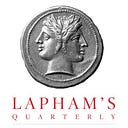Member-only story
Deeper Than Deep
David Reich’s genetics lab unveils our prehistoric past
By Ron Rosenbaum
“It’s like the discovery of the New World,” David Reich tells me. “Everything is new, nobody’s looked at it in this way before, so how can things not be interesting?”
The excitement surrounding David Reich’s ancient genetics lab at Harvard Medical School is almost palpable. Journals like Science and Nature are unstinting in their praise of the work being done in the Reich Laboratory. Reich and his colleagues are rewriting the history of the human species. Like a scientific Cecil B. DeMille, they are working toward creating an epic cinematic reenvisioning of human history that takes us deep into the mists of the past, tens of thousands of years ago.
In February of this year the forty-three-year-old Reich was named corecipient (with his colleague Svante Pääbo at Germany’s Max Planck Institute) of the $1 million Dan David Prize in archaeology and natural selection for being “the world’s leading pioneer in analyzing ancient human DNA,” which led to the discovery that Neanderthals and humans interbred — “a quantum leap in reconstructing our evolutionary past.”
A discovery, I was to learn from Reich in a conversation that preceded the prize, that had been superseded by even more astonishing developments…
